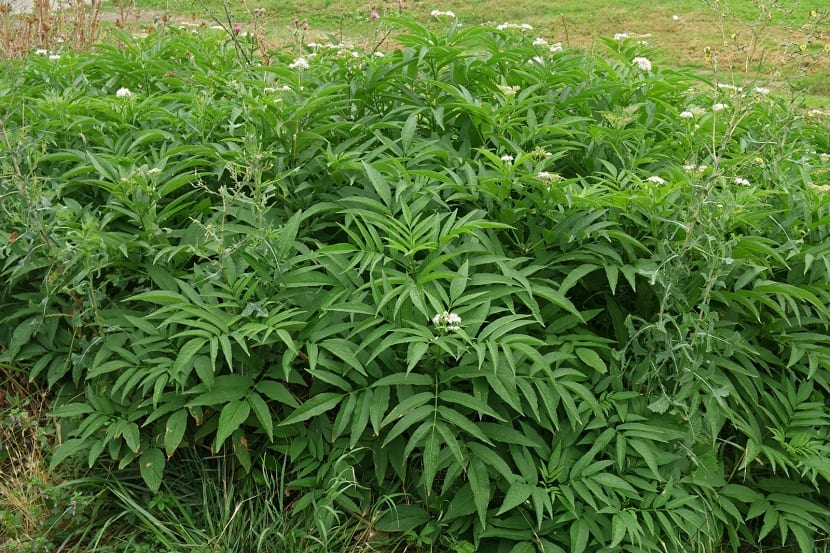
Today we are going to talk about a plant whose medicinal properties are quite interesting for treating various pathologies. Its about Sambucus ebulus. It is also known by its other common names such as Yezgo, Sauquillo, Actea, Ayebo, Ébulo, Enzo, Matapulgas, Mielgo, Negrillos, Saúco minor, Yambú, Yubo, Jambú. It is sometimes confused with the elder although they have nothing to do with it. It belongs to the Caprifoliáceas family and comes from Europe and North Africa.
In this article we are going to show you the main characteristics of the Sambucus ebulus and the medicinal properties it possesses.
Key features
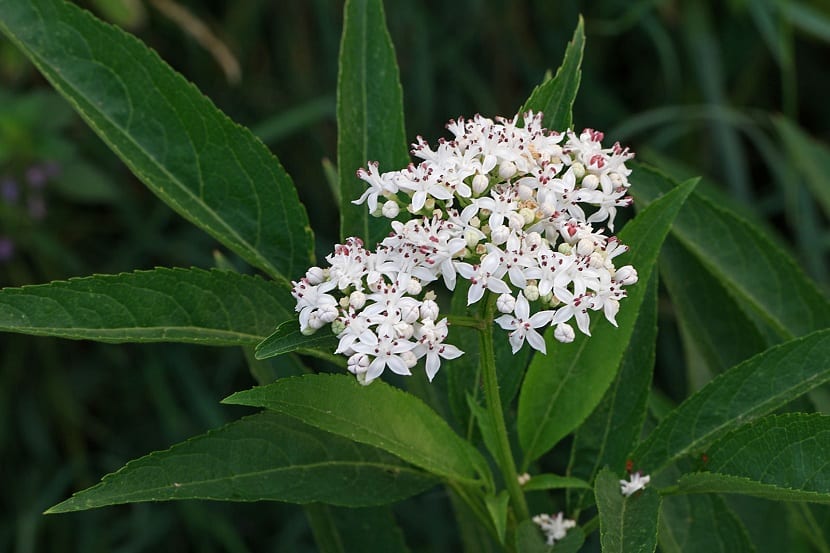
As we have mentioned before, it is common for this species to be confused with elderberry. However, the differences are very clear. For example, yezgo berries are toxic and elderberries are not. Later we will see in detail the differences between these species.
El Sambucus ebulus it is quite a lively herbaceous plant. It has a vigorous and creeping rhizome from which erect stems emerge with opposite leaves. These leaves have petioles about 5 cm long and the edges are serrated.
It is a perennial type and can reach 2 meters in height if the conditions are ideal. The smell it gives off is not very pleasant. The stems are usually quite branched and are woody. As for its flowers, they are grouped in inflorescences called corymbs and measure about 15 cm in diameter. Corolla It is either cream, white or pale pink in color. These do have a more noticeable smell. Flowering takes place in summer and the fruits develop when fall arrives.
The fruits are fleshy in drupe and have 3 seeds inside. They are usually held high. The juice that this plant has was used to make colorant or blue dye. At the root we also find a juice that is used to dye hair black. In popular culture it was said that the nauseating smell of yezgo leaves serves to repel moles and mice. Thanks to this, we can forget about this type of pests or strange invasions in our garden.
Medicinal properties of Sambucus ebulus
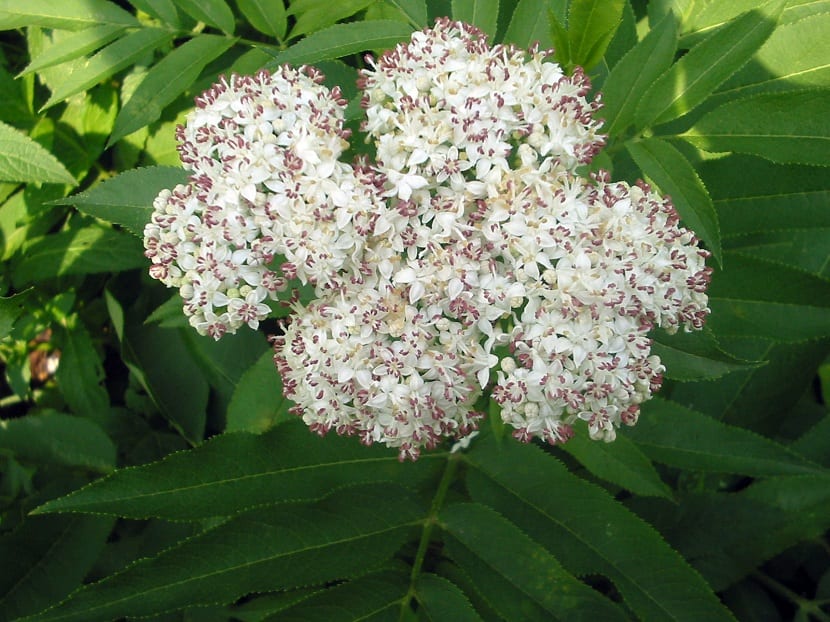
Although this plant has very interesting medicinal properties, the entire plant is toxic. That is, it only works if we apply it externally. The reason it is toxic is due to the presence of certain cyanogenic glycosides. Thus, This plant is not edible at all.
The roots are used to combat the bites of dogs that have rabies. Normally, it has been used in some cases like elderberry, although due to its high toxicity, it is better not to use it in home medicine.
Among its properties we find some such as sudorific, diuretic and laxative. These properties are what help to treat some health problems in some sick people or those who suffer from them occasionally. In case of edema (it is a fluid retention in the tissues) or kidney failure, Its diuretic effect helps you greatly to eliminate these liquids that we have in retention.
Another of its properties is antirheumatic. For this, its decoction or alcoholic extract is obtained and it is used externally in the form of compresses or by rubbing to soothe rheumatic pains. Among the most mentioned precautions about the Sambucus ebulus we must not exceed the doses that have been prescribed for both the root and the leaves.
Berries are very toxic, so they are not used for any medicinal treatment and much less to consume them. Since the entire plant is poisonous inside, its internal treatment is not recommended either.
Differences between elderberry and yezgo
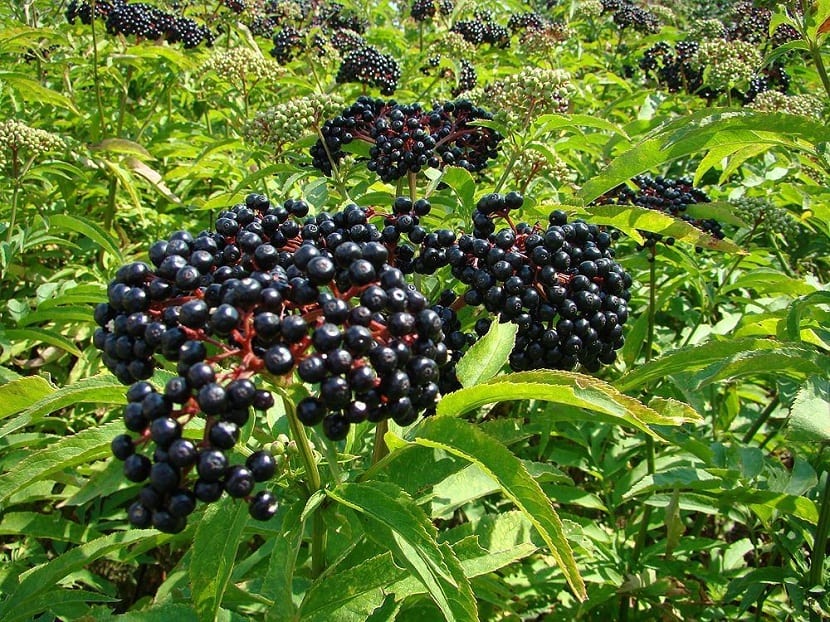
As we have mentioned several times in the article, we find a common confusion of the yezgo with the elderberry. Both have medicinal properties, but one plant is toxic and the other is not. To differentiate them, there are multiple ways. We are going to explain it in parts. The first thing is its leaves. The leaves of the yezgo are smaller and elongated. If we compare the two, you can see that the elderberry has the largest leaves and, although they are elongated, they have a somewhat more rounded appearance as they are larger.
Another way to differentiate them is by the flowers. The arboreal shape of the elderberry has wide corymbs and they are full of flattened flowers. They are usually focused looking up at the sky. On the other hand, the sumbucus ebulus, It has a bushy bearing with the corymbs narrow instead of wide and they are not so flattened.
In the fruits we also find certain differences. Elderberry fruits are like pendulums and hang from the branches when they are ripe. Instead, the yezgo has the fruits held high, as we have mentioned before, and they are not hanging from the branches. Thanks to the set of fruits, flowers and leaves, we can differentiate both species with relative ease.
Knowing these differences is important since we find that elderberries are edible and the yezgo is toxic. For anyone who does not know these plants well or know how to differentiate them well, we can run into some unwanted poisoning problems. The same happens if we want to carry out some type of infusion or some internal treatment with elderberry and we are confusing it with the yezgo. They both belong to the same genus, but they have completely different properties.
Treatments
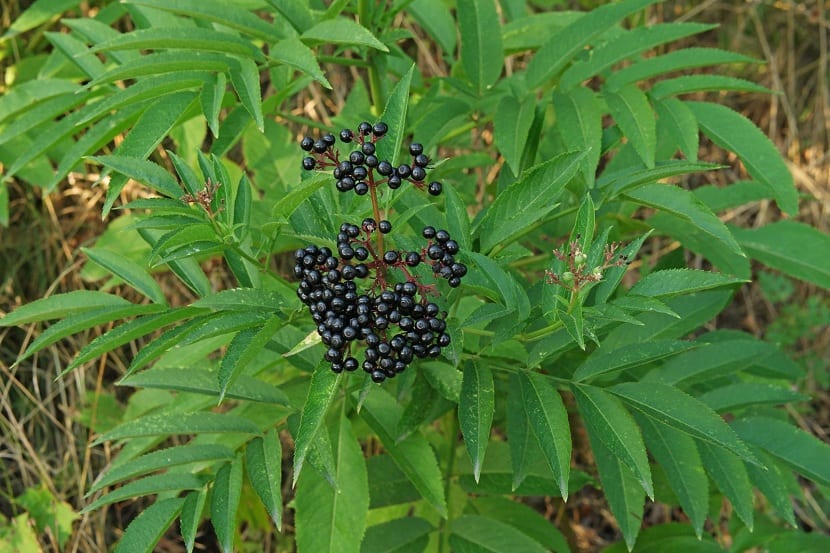
This plant is considered a fairly strong antiviral. It is recommended as a stimulant for the healing of various degenerative diseases and as a prevention of cancerous diseases. It is also used to control some benign tumors.
It helps enormously in the destruction of different intestinal worms. In case of rheumatism, it can help alleviate negative symptoms in the respiratory system.
As you can see, the Sambucus ebulus It is a plant with interesting medicinal uses that can help us on various occasions. However, it is important to know the main differences with elderberry so that there are no unwanted confusion.